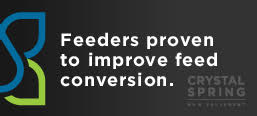
A national organization dedicated to pork research from farm to fork is midway through a cluster involving 15 projects at a total investment of just over $20 million. Since its establishment in 2010, Swine Innovation Porc has invested over $71 million in 75 large-scale projects involving more than 150 researchers.
In conjunction with the 2025 Banff Pork Seminar early in January, SIP leaders brought its story to Banff, along with a few of the researchers at the forefront of those projects.
Manuel Juárez, phenomics scientist for Agriculture and Agri-Food Canada at Lacombe demonstrated some of the practical technology his team is testing to improve carcass quality assessment. Juárez’s presentation was followed by a panel discussion from some of Canada’s foremost researchers, including Yolande Seddon from the University of Saskatchewan, Chantal Farmer from AAFC in Sherbrooke, Quebec and Martin Nyachoti from the University of Manitoba.
SIP General Manager Daniel Ramage introduced the speakers and gave an overview of his organization’s role in gathering together government, researchers, research institutions and industry partners to support research relevant to pork production. Over the five years commencing in 2023, SIP’s Cluster 4 covers projects in areas of nutrition, pork quality, animal welfare, environment and animal health.
“For us as an organization and as facilitators for research (SIP’s role), is to be the national facilitator for research in Canada’s pork sector and we do that by bringing together industry and academia and government and it’s all about advancing research and knowledge transfer in response to the industry’s needs. It’s about positioning our industry for greater productivity greater competitiveness and greater sustainability,” said Ramage.
He also described the development of a new research plan facilitated through funds collected from pork imports into Canada and managed by the Pork Promotion Research Agency.
“So essentially, this is a new program that collects revenues on pork imports into Canada and funds from that are being directed, partly towards marketing and partly towards research. Those research dollars offer an opportunity that we think can be a catalyst for bringing partners together at the national stage so that we can build national programming.
“This is something that we heard when I talked about our strategic planning: We heard loud and clear that there’s a real interest in more coordination, more collaboration at the national level. And this is one of those opportunities that’s going to allow us to kickstart some of that coordination, so we’re really excited about it.”
He advised attendees to “stay tuned” for further developments as this new plan rolls out.
Juárez then took the stage to show some of the gear his team has been developing to take the guesswork out of assessing carcass quality.
A variety of near-infrared spectroscopy cameras is being tested for their efficacy in providing an accurate analysis of loin colour as an indication of quality, said Juárez. Colour charts developed for manually assessing loin colour are based on fluorescent lighting, which used to be common in food processing, he said. However, the charts are not accurate under LED lighting, which is now more common.


The near-infrared cameras assess colour accurately, regardless of lighting. Juárez donned a head-mounted camera that allows the operator to assess on the go, viewing results through an eyepiece.
Juárez also talked about the need for accurately gauging firmness of a pork belly, showing a tool that can measure in degree of firmness. The tool can be mounted on a conveyor system to sort bellies by how much they bend in the middle, putting the firmest bellies on the top belt. Middle-range bellies go to the centre and the floppy ones are put aside for other uses.
He stated that pork belly is now one of the most expensive cuts, accounting for 15 to 20 per cent of the total carcass value while making up only 12 to 17 per cent of the chilled carcass weight.
Results of this project should help identify traits for genetic selection and the study should support achievement of a balanced selection index.
More details of the Lacombe study are available as a fact sheet on SIP’s website, www.swineinnovationporc.ca/projects
Ravneet Kaur, SIP’s manager of research development, then opened a panel discussion with Seddon, Farmer and Nyachoti on the power of public-private collaboration as the backbone of meaningful progress.
“Today’s discussion will highlight how working together has led to breakthroughs in areas like sow nutrition, sustainability and animal welfare,” said Kaur.
She asked each of the panellists to discuss the value of collaboration in terms of achieving goals that might not otherwise have been attainable.
Martin Nyachoti, head of U of M’s department of animal science, said collaboration is critical in research because no one person can do everything required.
“There are very many questions that are equally important, that we need to address, but we cannot really address those questions as individuals; we do not have all the skill sets,” said Nyachoti.
Access to facilities and knowledge are also important research elements that can be enhanced through collaboration, he said.
Additionally, ideas develop as collaborators sit around the table and address problems.
Chantal Farmer, research scientist in swine lactation for AAFC in Sherbrooke, Que, said collaboration with the private sector ensures that research is relevant to industry and provides access to technology.
“If I work with a company, it can be guaranteed that within two or three years, there will be a symposium somewhere that I am invited to give a talk to, and then that gives information to their nutritionists, their veterinarians, producers; these people take the information and bring it on to other people, so that is something that is very positive,” said Farmer.
Collaborations such as SIP’s research clusters free researchers up from the constant search for money so they can focus on their projects rather than on getting them funded. •
— By Brenda Kossowa





